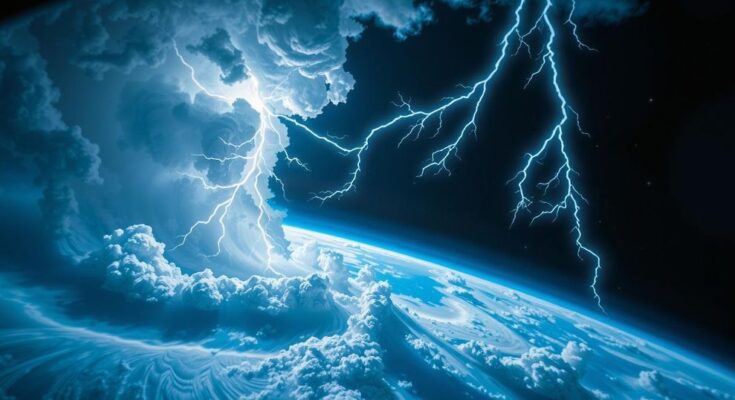Skylab 3 astronauts witnessed Hurricane Ellen’s formation, capturing stereo images that aided meteorologists in understanding tropical clouds. Skylab 4’s Edward G. Gibson observed simultaneous lightning patterns in storms, contributing valuable data to mesoscale weather studies. These missions demonstrated the essential role of human observers in space, enhancing storm forecasting.
During the summer of 1973, Skylab 3 astronauts completed 858 orbits around Earth, witnessing remarkable phenomena, including the formation of Hurricane Ellen off the West African coast. Astronaut Alan L. Bean remarked on the storm’s size and cloud presence, stating, “There’s a nice storm down there. She looks pretty big. She’s got a lot of clouds.” Recognizing its significance for meteorology, the crew captured stereo images of the hurricane, which assisted meteorologists in understanding tropical cloud development.
Additionally, Skylab 4 astronaut Edward G. Gibson made crucial observations while examining storms over the Andes Mountains in South America. He noted the presence of simultaneous lightning strikes across a vast area, indicating patterns within the storm. Gibson reflected, “A few things impressed me here: one is the fact that they could go off simultaneously or near simultaneously over a large distance—sympathetic lightning bolts, if you will.”
These images and observations are part of the extensive meteorological data gathered by Skylab astronauts during the three crewed missions. The studies contributed significantly to mesoscale weather forecasting, enhancing the accuracy of storm predictions. Furthermore, findings from Skylab supported the contention of contemporary scientists that human observers in space offered unique insights that technology alone could not replicate.
The authors of “Living and Working in Space: A History of Skylab” encapsulated this idea, stating that the human ability to identify and respond to key features in dynamic environments constituted the most valuable asset for space-based research.
In summary, the Skylab missions yielded invaluable meteorological observations that advanced our understanding of tropical storms and lightning patterns. The collected data from astronaut-conducted studies played a crucial role in enhancing weather forecasting capabilities and underscored the irreplaceable value of human observers in the realm of space exploration and environmental monitoring.
Original Source: www.nasa.gov




